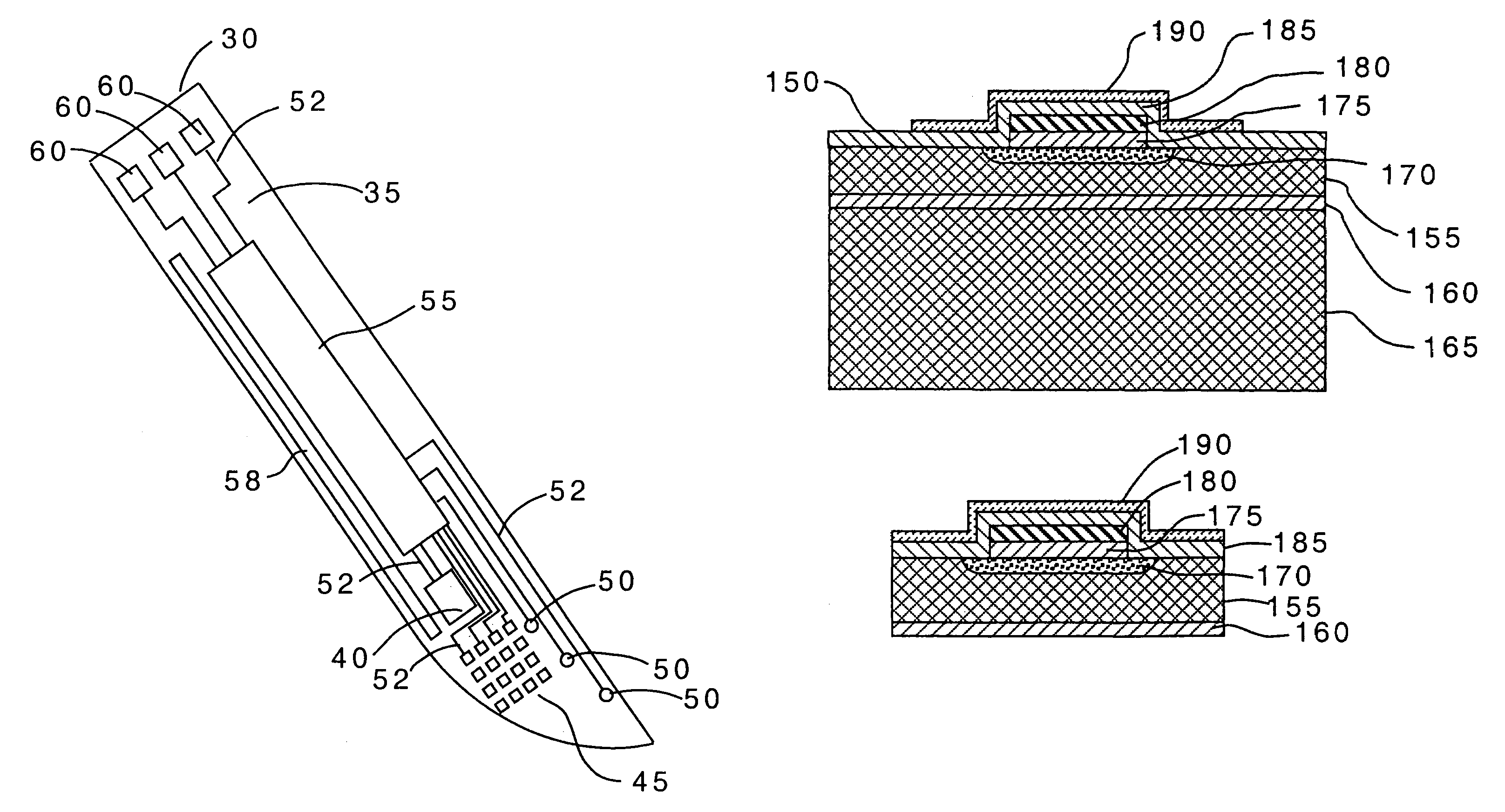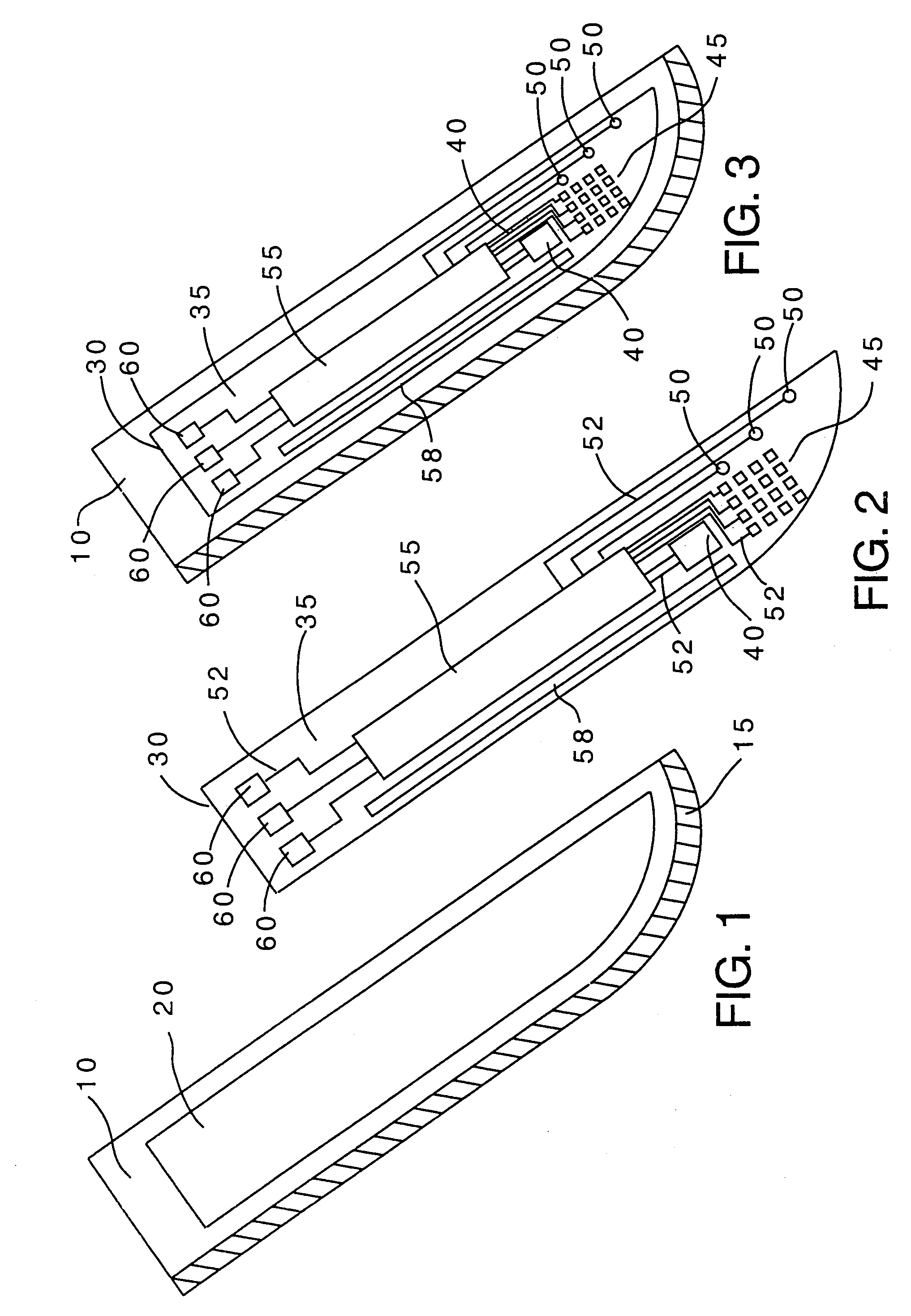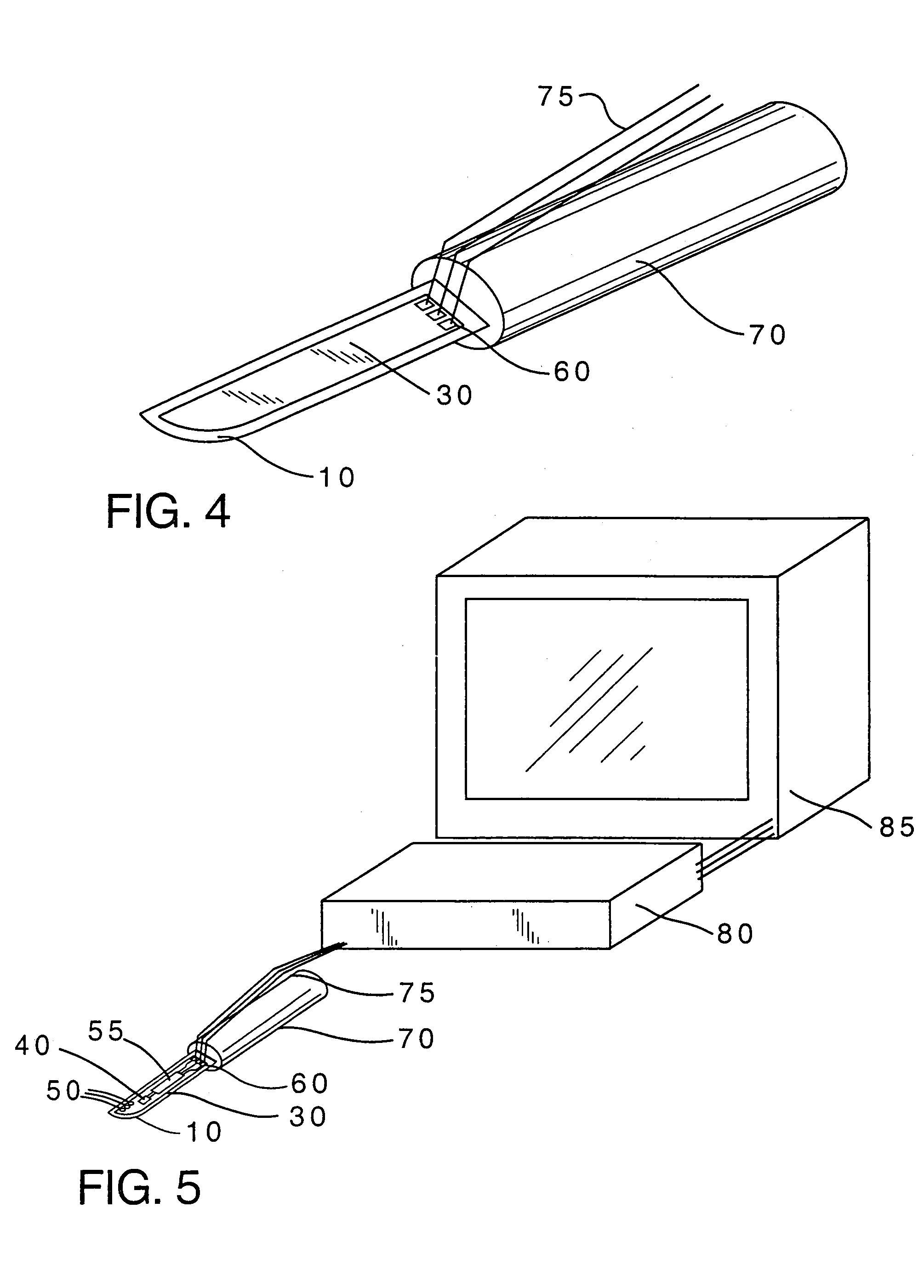Method of making a cutting instrument having integrated sensors
a technology of cutting instruments and sensors, applied in the field of cutting instruments, can solve the problems of severe adverse effects, complex task, and failure to properly classify tissue before making incisions, and achieve the effects of improving the safety and safety of surgical procedures, reducing the risk of surgical complications, and improving the safety of surgical procedures
- Summary
- Abstract
- Description
- Claims
- Application Information
AI Technical Summary
Benefits of technology
Problems solved by technology
Method used
Image
Examples
Embodiment Construction
[0035]Referring to FIG. 1, blade 10, preferably made of a metal such as stainless steel, includes sharp edge 15 and recess 20 formed therein. As shown in FIG. 1, the shape of recess 20 preferably follows the shape of edge 15 of blade 10 so as to maximize the ability to increase the density of the sensors located at or near edge 15. Recess 20 can be formed in blade 10 by one of several well known methods including grinding, milling, chemical etching, water-jet machining, stamping, or electron discharge machining. Although only a single recess 20 is shown on a single side of blade 10 in FIG. 1, it should be understood that recess 20 may be formed on either one of the sides of blade 10, or both sides of blade 10. Additionally, multiple recesses of the same or different size and / or arrangement may be formed on one or both sides of blade 10.
[0036]Referring to FIG. 2, a sensor element 30 is shown. Sensor element 30 includes semiconductor substrate 35, preferably made of silicon. Formed on...
PUM
 Login to View More
Login to View More Abstract
Description
Claims
Application Information
 Login to View More
Login to View More - R&D
- Intellectual Property
- Life Sciences
- Materials
- Tech Scout
- Unparalleled Data Quality
- Higher Quality Content
- 60% Fewer Hallucinations
Browse by: Latest US Patents, China's latest patents, Technical Efficacy Thesaurus, Application Domain, Technology Topic, Popular Technical Reports.
© 2025 PatSnap. All rights reserved.Legal|Privacy policy|Modern Slavery Act Transparency Statement|Sitemap|About US| Contact US: help@patsnap.com



